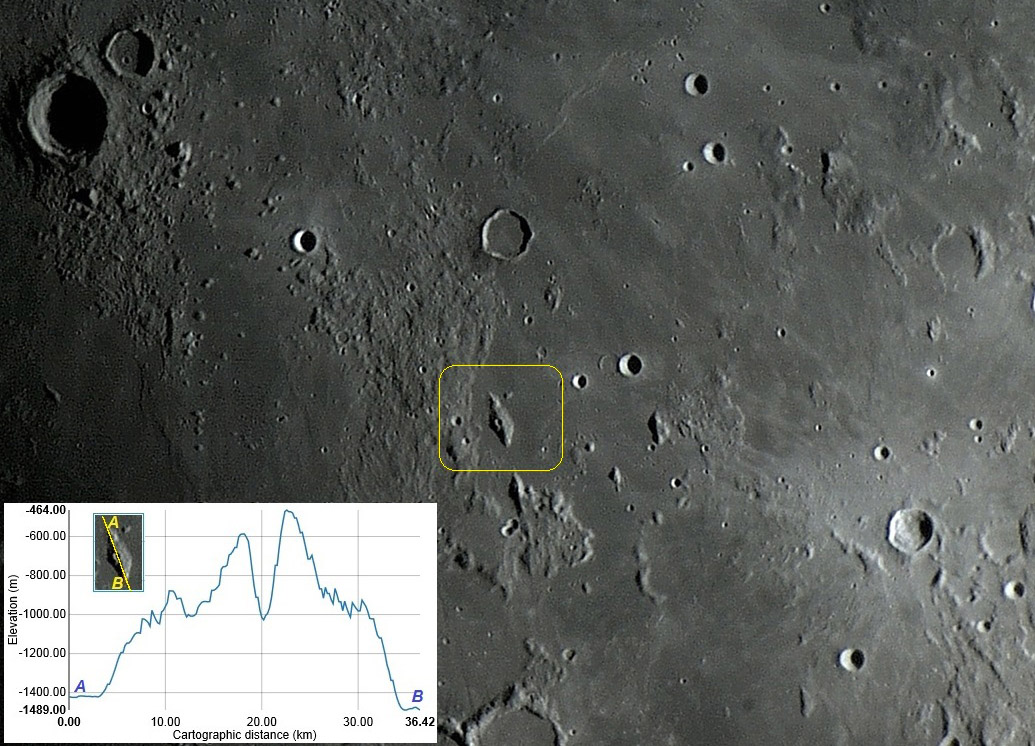Difference between revisions of "August 1, 2014"
| Line 14: | Line 14: | ||
<br /> | <br /> | ||
<strong>Related Links</strong><br /> | <strong>Related Links</strong><br /> | ||
| − | <em>[ | + | <em>[[21st Century Atlas of the Moon|21st Century Atlas]]</em> chart 17.<br /> |
<br /> | <br /> | ||
<p><b>Yesterday's LPOD:</b> [[July 31, 2014|Mini & Maxi]] </p> | <p><b>Yesterday's LPOD:</b> [[July 31, 2014|Mini & Maxi]] </p> | ||
Latest revision as of 07:23, 28 October 2018
Pitted Pyramid

image by Ricardo Jose Vaz Tolentino, Brazil
Fra Mauro Eta is an elongated mountain that is oriented approximately in the North-South direction. It is about 30 km long, with a maximum width of about 11 km, and height around 1.1 Km. Near the midpoint of the top of this flat diamond-shaped and three-dimensional pyramid-shaped mountain is a small crater, Fra Mauro R, with a diameter of 3.4 km and a depth of 650 m. Fra Mauro Eta is considered by many scientists as a feature of radial sculpture from Imbrium Basin, because it longitudinally points directly to the Mare Imbrium. Around the Imbrium basin are regions covered by material ejected by the huge impact event that excavated that great basin, extending for about 800 km out of the basin. Also encircling Mare Imbrium is a pattern of grooves and radial sculpture called Imbrium sculpture which has been interpreted as being formed by large projectiles ejected at high speeds and low angles, during the Imbrium event, causing them to slide across the lunar surface, cutting and sculpting the radial formations.
Ricardo Jose Vaz Tolentino
Technical Details
Sky-Watcher Collapsible Truss-Tube 12" DOB.+ Celestron Ultima 2X Barlow + Orion StarShoot Solar System Color Imager Camera III - just one frame.
Related Links
21st Century Atlas chart 17.
Yesterday's LPOD: Mini & Maxi
Tomorrow's LPOD: Subjective Observing
COMMENTS?
Register, Log in, and join in the comments.



